Dell u2412m: getting rid of shima without losing the ability to adjust the brightness
This article will tell you the sequence of necessary actions to forget about the pulse-width modulation (PWM) in your monitor once and for all. You will work behind the monitor with the brightness that will be comfortable for your eyes, only with one difference - the backlight of your monitor will not generate PWM. Everything is very simple! The main thing is to be able to work with a soldering iron ...
The actions presented in this article lead to the loss of warranty on the monitor. The author is not responsible for force majeure or other circumstances resulting in damage to your property used in trying to repeat the steps below.
Well, after much deliberation and accumulation of money, I finally became the copyright holder of a certain number of Dell u2412m monitors. For those interested - A0 revision, January 2013. After reading a few forums on which this monitor is discussed, I came to the conclusion that many potential buyers are worried about the presence of PWM. Yes, indeed, in the first revisions, users complained about PWM, but from the reviews it was possible to understand that in subsequent revisions this problem was fixed. Since I am not the copyright holder of the first revisions, as well as the electrical principle circuit (in order to compare the differences in electronics), I can assume from my experience that a simple, banal step was taken - an increase in the frequency of PIM.
')
But nevertheless, the people continue to ask, asking the same question again and again - “I think I should take the U2412M, but I am confused by the presence of PWM. Tell me, will his eyes hurt badly? ”
As for me, after sitting for a week behind the monitor with the presence of SHIM, having got used, I can say that he did not press hard on the eyes. Although everyone has their own body, as well as vision. Yes, in the first hours of sitting behind the monitor it was unusual, but then somehow everything fell into place. Nevertheless, there remained some moments that made the eyes load. These moments were manifested when it was necessary to skip from one monitor to another. It was then that I noticed the PWM. Since this feeling did not give me rest, it was decided to understand the monitor electronics, namely the LED backlight driver.
Having added a modification, which I will talk about below, my eyes began to take a little better picture on the monitor ... But I can’t say that there’s a big difference (or maybe I’m just used to it). But this is not an opinion, coming home from work, the first feelings that my eyes experience after a working monitor are rest ...
Immediately I will say that after making changes, the user can still use the internal mode of changing the brightness, which leads to the switching on of PWM. In order for the monitor electronics not to include PWM, the monitor brightness must be set to 100% and a further change in brightness is performed using a variable resistor.
(who is not interested - can miss)
And so, what is the point ... And the point is that the brightness adjustment did not take place according to the PWM principle, but according to the principle of changing the current passing through the LCD backlight of the LCD monitor. This feature is offered by most LED driver ICs. But for a start it would be nice to know what kind of chip is used to power the LED backlight in our monitor. For this we need to disassemble it.
I will not dwell on where and what you need to click-pull, unwind in order to disassemble the monitor. This information you can safely find on the network. For example, here.
Chip driver defined - OZ9998. The next step is to search for documentation on this chip. Unfortunately, my searches were not successful.
Since this microcircuit is located on the power supply board, it would be nice to find a circuit for the power supply of the u2412m monitor. That, too, was not crowned with success. Due to one forum, we managed to find circuits that use our OZ9998 LED driver.
Here for example one of the schemes:
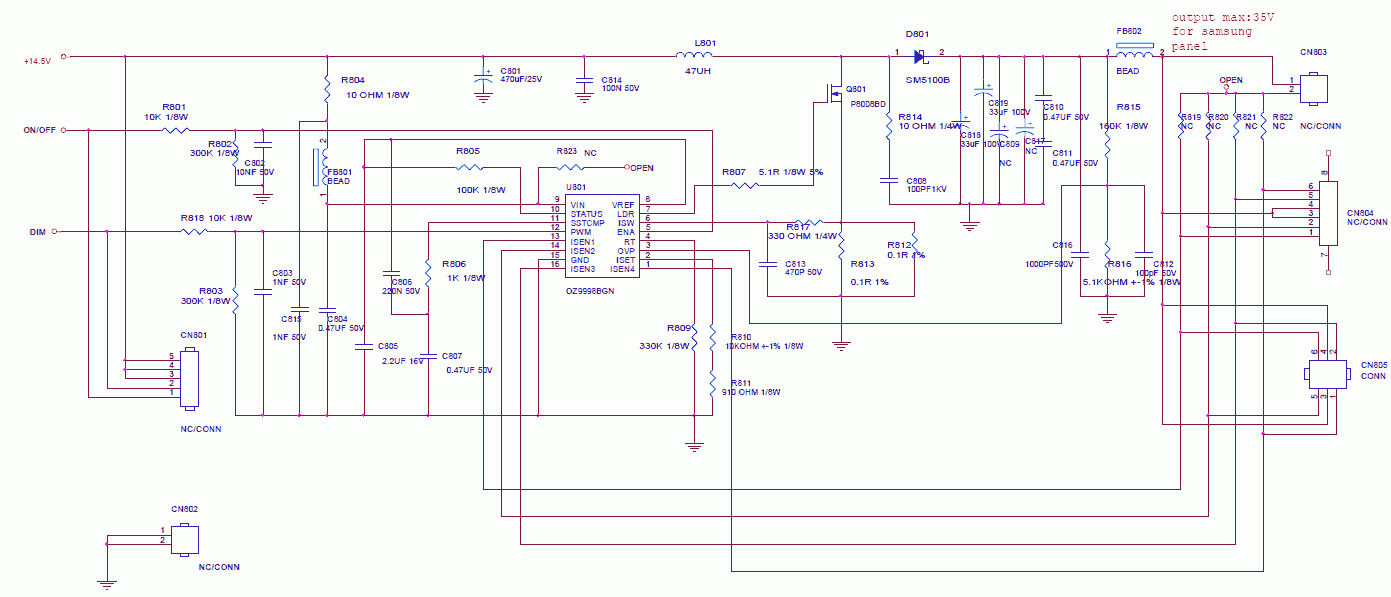
Based on the fact that all LED drivers have approximately the same structure, the analog of our OZ9998 fell under the arm - this is TPS61199 . Here are the numbers of functional outputs of the chips do not match each other. After reading the documentation for the TPS61199, you can determine that the output with the name Iset is responsible for setting the current value through the line of LEDs. In our OZ9998, the second leg of the chip is responsible for this functionality. The magnitude of the current depends linearly on the resistance of the resistor, multiplied by a certain factor (for more information, see TPS61199 datasheet ). Since I have no documentation for OZ9998, I had to resort to practice. Without hesitation, he took the nearest variable resistor and soldered it in series to the already existing one.
Thus, it was practically determined that the maximum installed resistance on a variable resistor, at which the brightness of the monitor backlight is the minimum acceptable for vision, is 100 kΩ. By changing the value of its resistance with a potentiometer, you can change the brightness of the monitor backlight. As a result, we received a change in brightness which does not occur according to the PWM principle, but according to the principle of changing the current passing through the LEDs of the LCD monitor backlight.
We assume that the monitor has already been disassembled (how to disassemble the monitor, see here ):

Carefully peel off the unit with electronics and disconnect the necessary loops:
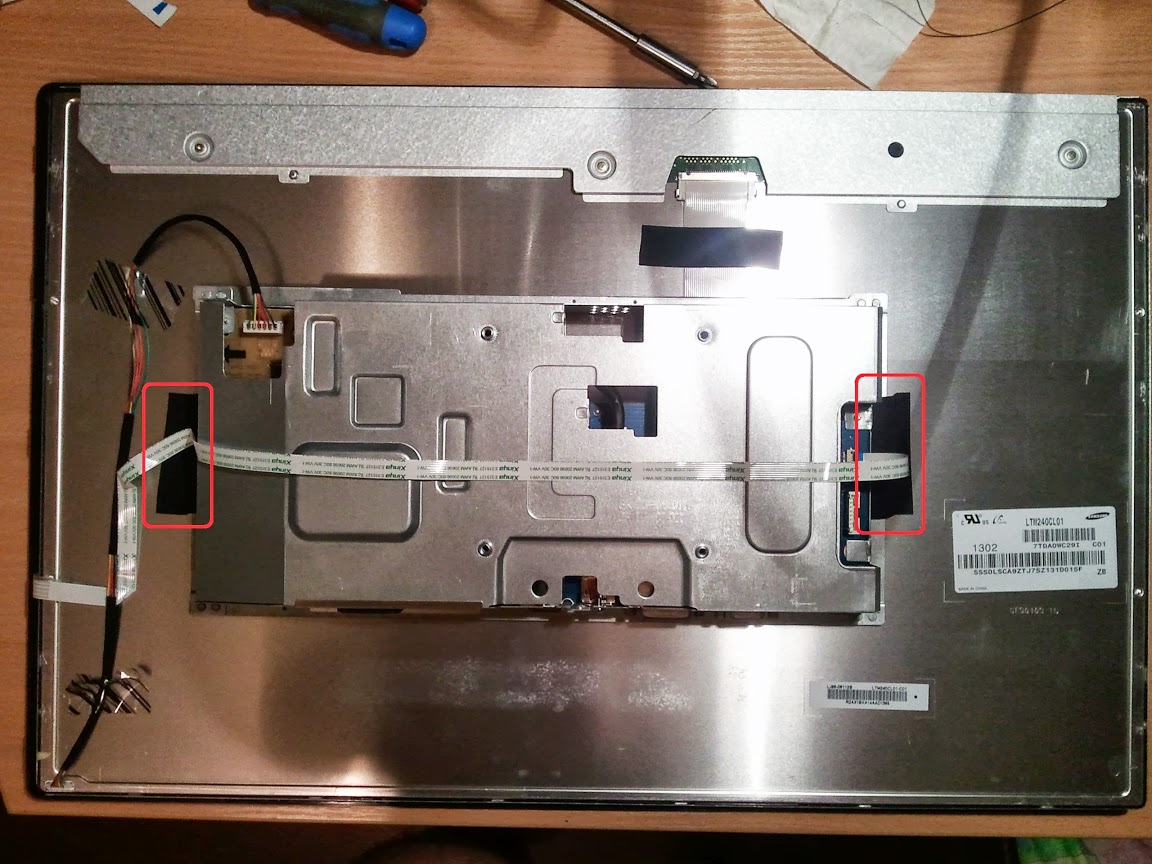
The power board along with the interface board lies before our eyes.

We are interested in this area:

Increased:
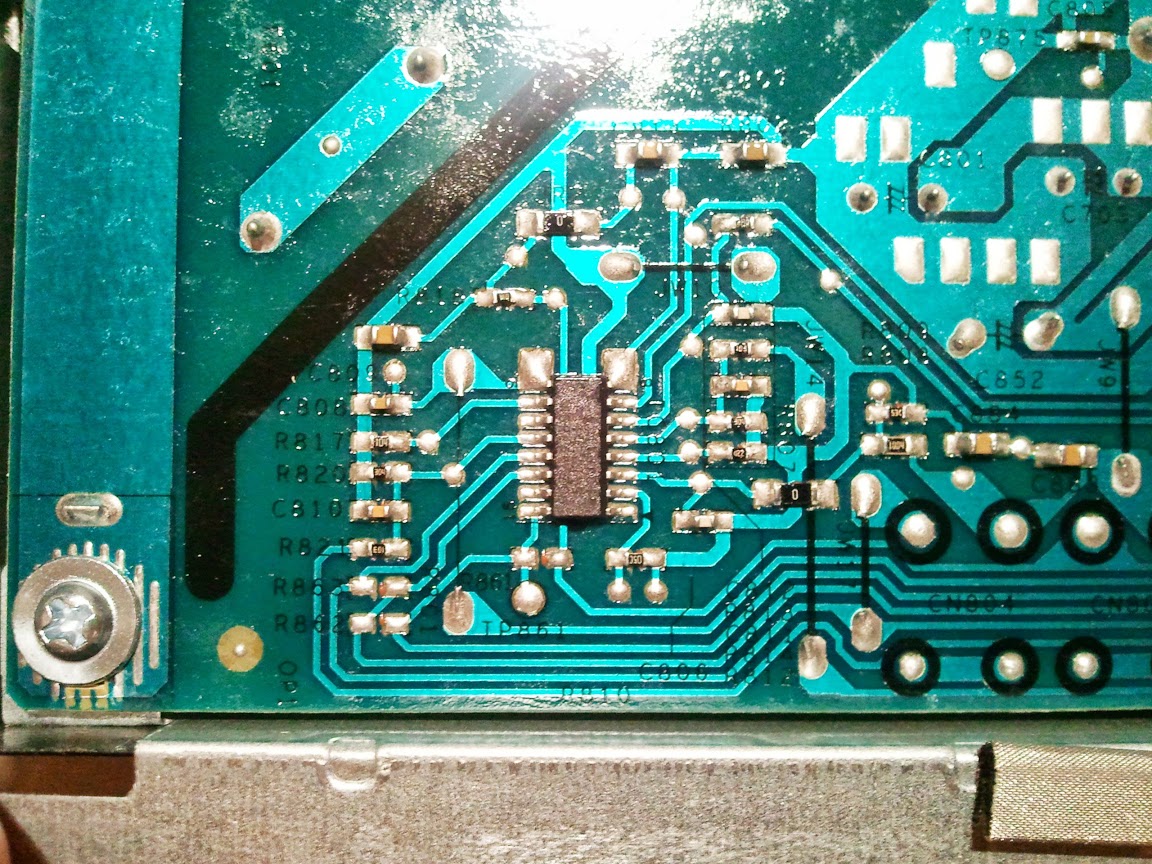
Namely, a resistor that is connected to the second leg of the chip.

In order not to accidentally exceed the current through the LEDs set by the manufacturer, we need to think of how to solder leaving the native resistor. To do this in the beginning we drop it.
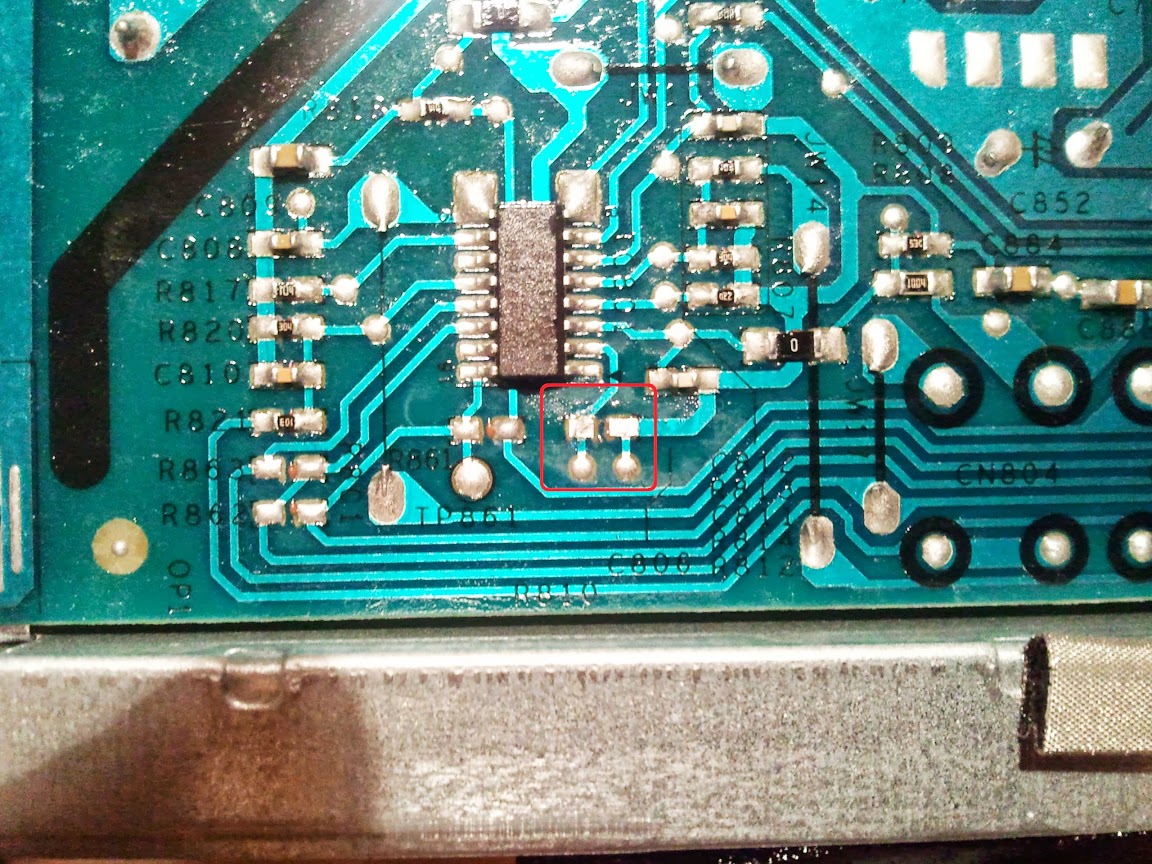
Next affairs a little slit.
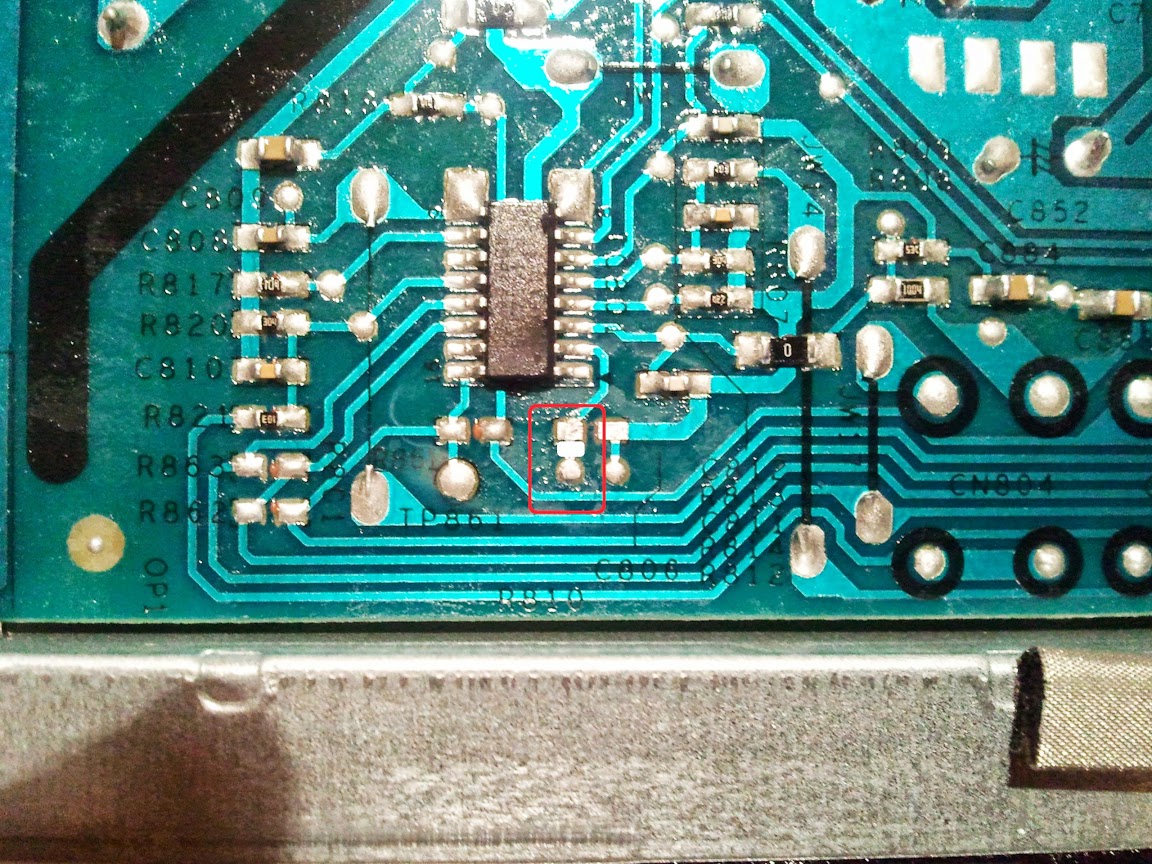
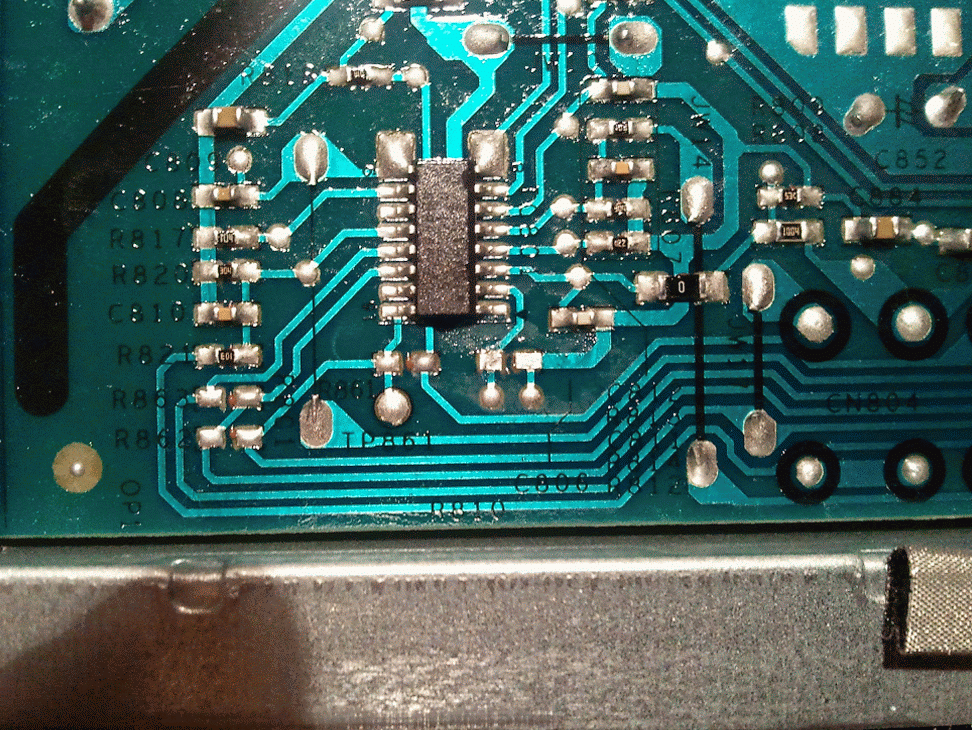
Prepare a variable resistor, pre-setting the resistance between the used pins to zero.
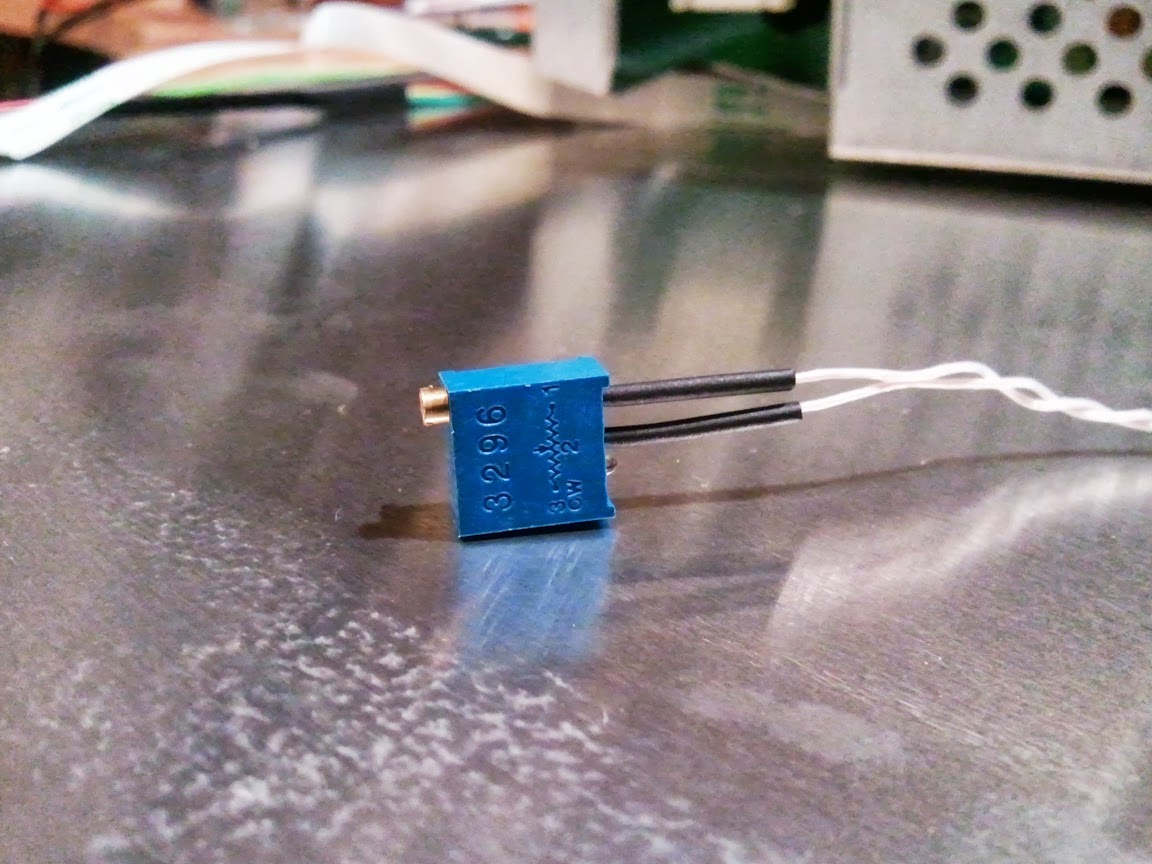
We solder the native resistor back (the one that we drop off) into the slot (see the picture carefully) and our variable resistor as shown in the picture, that is, sequentially.

We derive a variable resistor for the monitor case, so that in a state where the monitor is assembled, it is possible to adjust. I did this here:
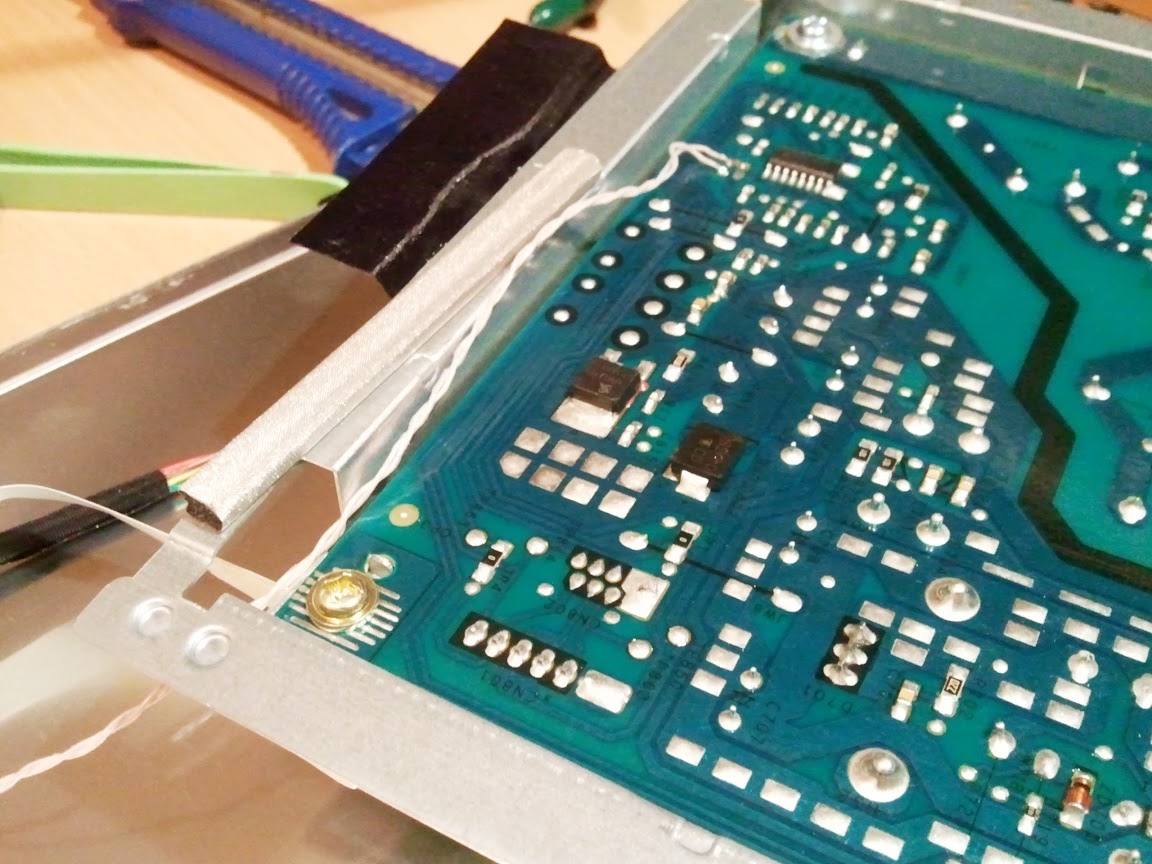
That's all. Those who want to test the functionality can connect the cables and make tests.
The video shows how I use the variable resistor at the beginning and then increase the brightness. In the second part, the brightness change occurs through the internal functions of the monitor.
PS
Having worked for some time behind the monitor, I determined the amount of brightness at which it is convenient for me to work. I measured the resistance that turned out on the variable resistor and soldered the resistor of constant resistance.
Attention!
The actions presented in this article lead to the loss of warranty on the monitor. The author is not responsible for force majeure or other circumstances resulting in damage to your property used in trying to repeat the steps below.
About current issues
Well, after much deliberation and accumulation of money, I finally became the copyright holder of a certain number of Dell u2412m monitors. For those interested - A0 revision, January 2013. After reading a few forums on which this monitor is discussed, I came to the conclusion that many potential buyers are worried about the presence of PWM. Yes, indeed, in the first revisions, users complained about PWM, but from the reviews it was possible to understand that in subsequent revisions this problem was fixed. Since I am not the copyright holder of the first revisions, as well as the electrical principle circuit (in order to compare the differences in electronics), I can assume from my experience that a simple, banal step was taken - an increase in the frequency of PIM.
')
But nevertheless, the people continue to ask, asking the same question again and again - “I think I should take the U2412M, but I am confused by the presence of PWM. Tell me, will his eyes hurt badly? ”
As for me, after sitting for a week behind the monitor with the presence of SHIM, having got used, I can say that he did not press hard on the eyes. Although everyone has their own body, as well as vision. Yes, in the first hours of sitting behind the monitor it was unusual, but then somehow everything fell into place. Nevertheless, there remained some moments that made the eyes load. These moments were manifested when it was necessary to skip from one monitor to another. It was then that I noticed the PWM. Since this feeling did not give me rest, it was decided to understand the monitor electronics, namely the LED backlight driver.
Having added a modification, which I will talk about below, my eyes began to take a little better picture on the monitor ... But I can’t say that there’s a big difference (or maybe I’m just used to it). But this is not an opinion, coming home from work, the first feelings that my eyes experience after a working monitor are rest ...
Immediately I will say that after making changes, the user can still use the internal mode of changing the brightness, which leads to the switching on of PWM. In order for the monitor electronics not to include PWM, the monitor brightness must be set to 100% and a further change in brightness is performed using a variable resistor.
A little about monitor electronics
(who is not interested - can miss)
And so, what is the point ... And the point is that the brightness adjustment did not take place according to the PWM principle, but according to the principle of changing the current passing through the LCD backlight of the LCD monitor. This feature is offered by most LED driver ICs. But for a start it would be nice to know what kind of chip is used to power the LED backlight in our monitor. For this we need to disassemble it.
I will not dwell on where and what you need to click-pull, unwind in order to disassemble the monitor. This information you can safely find on the network. For example, here.
Chip driver defined - OZ9998. The next step is to search for documentation on this chip. Unfortunately, my searches were not successful.
Since this microcircuit is located on the power supply board, it would be nice to find a circuit for the power supply of the u2412m monitor. That, too, was not crowned with success. Due to one forum, we managed to find circuits that use our OZ9998 LED driver.
Here for example one of the schemes:

Based on the fact that all LED drivers have approximately the same structure, the analog of our OZ9998 fell under the arm - this is TPS61199 . Here are the numbers of functional outputs of the chips do not match each other. After reading the documentation for the TPS61199, you can determine that the output with the name Iset is responsible for setting the current value through the line of LEDs. In our OZ9998, the second leg of the chip is responsible for this functionality. The magnitude of the current depends linearly on the resistance of the resistor, multiplied by a certain factor (for more information, see TPS61199 datasheet ). Since I have no documentation for OZ9998, I had to resort to practice. Without hesitation, he took the nearest variable resistor and soldered it in series to the already existing one.
Thus, it was practically determined that the maximum installed resistance on a variable resistor, at which the brightness of the monitor backlight is the minimum acceptable for vision, is 100 kΩ. By changing the value of its resistance with a potentiometer, you can change the brightness of the monitor backlight. As a result, we received a change in brightness which does not occur according to the PWM principle, but according to the principle of changing the current passing through the LEDs of the LCD monitor backlight.
Take the tool in hand and go
We assume that the monitor has already been disassembled (how to disassemble the monitor, see here ):

Carefully peel off the unit with electronics and disconnect the necessary loops:

The power board along with the interface board lies before our eyes.

We are interested in this area:

Increased:

Namely, a resistor that is connected to the second leg of the chip.

In order not to accidentally exceed the current through the LEDs set by the manufacturer, we need to think of how to solder leaving the native resistor. To do this in the beginning we drop it.

Next affairs a little slit.


Prepare a variable resistor, pre-setting the resistance between the used pins to zero.

We solder the native resistor back (the one that we drop off) into the slot (see the picture carefully) and our variable resistor as shown in the picture, that is, sequentially.

We derive a variable resistor for the monitor case, so that in a state where the monitor is assembled, it is possible to adjust. I did this here:

That's all. Those who want to test the functionality can connect the cables and make tests.
The video shows how I use the variable resistor at the beginning and then increase the brightness. In the second part, the brightness change occurs through the internal functions of the monitor.
PS
Having worked for some time behind the monitor, I determined the amount of brightness at which it is convenient for me to work. I measured the resistance that turned out on the variable resistor and soldered the resistor of constant resistance.
Source: https://habr.com/ru/post/191180/
All Articles